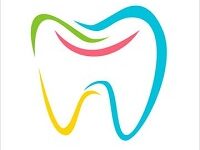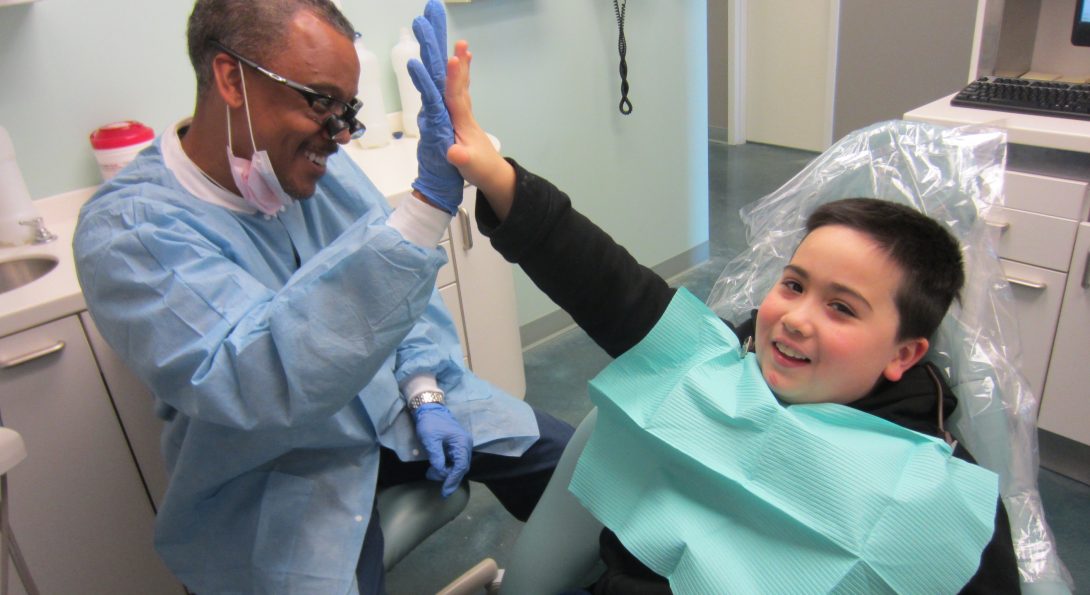Maintaining Gum Health After Periodontal Treatment
They say that an ounce of prevention is worth a pound of cure, and when it comes to maintaining gum health after periodontal treatment, this adage couldn’t be more true.
You’ve made it through the treatment, but the journey to healthy gums doesn’t end there. It’s time to take charge of your oral health and ensure that your gums stay in tip-top shape.
But how exactly do you do that? Well, my friend, in this discussion, we will explore some key strategies that can help you maintain your gum health post-treatment.
So, buckle up and get ready to discover the secrets to keeping your gums healthy and happy for years to come.
Oral Hygiene Routine
To maintain gum health after treatment, establish a consistent oral hygiene routine that includes brushing and flossing daily. This routine is crucial in preventing the recurrence of gum problems and maintaining the overall health of your gums.
Start by brushing your teeth at least twice a day, using a soft-bristled toothbrush and fluoride toothpaste. Be sure to brush all surfaces of your teeth, including the front, back, and chewing surfaces. Remember to brush gently in circular motions, taking care not to scrub too hard as this can damage your gums.
In addition to brushing, it’s important to floss your teeth at least once a day. Flossing removes plaque and food particles that may be trapped between your teeth and along the gumline, areas that are often missed by brushing alone.
Take a piece of floss about 18 inches long and wrap it around your fingers, leaving a small section to work with. Gently slide the floss between your teeth, moving it up and down to remove any debris. Be sure to curve the floss around each tooth, reaching below the gumline to remove plaque and bacteria.
Proper Brushing Technique
Improve your gum health by mastering the proper brushing technique. Brushing your teeth is an essential part of maintaining good oral hygiene and preventing gum disease. To ensure you’re effectively removing plaque and bacteria, follow these three tips:
1. Use the right toothbrush: Choose a soft-bristled toothbrush that can reach all areas of your mouth easily. Avoid using a toothbrush with hard bristles, as it can irritate your gums and cause damage.
2. Brush at a 45-degree angle: Hold your toothbrush at a 45-degree angle towards your gums. This allows the bristles to reach the gum line and clean along the tooth surface. Gently brush in small circular motions, focusing on one or two teeth at a time.
3. Don’t forget your tongue: Plaque and bacteria can also accumulate on your tongue, leading to bad breath. After brushing your teeth, use a toothbrush or tongue scraper to gently clean your tongue from back to front.
Flossing and Interdental Cleaning
Now it’s time to talk about flossing and interdental cleaning.
You need to know the proper flossing techniques to effectively remove plaque and food particles from between your teeth.
Interdental cleaning, such as using interdental brushes or water flossers, also has many benefits for maintaining gum health.
Make sure to floss and clean between your teeth at least once a day for optimal results.
Proper Flossing Techniques
Using proper flossing techniques is essential for maintaining gum health after treatment. Here are three tips to help you floss effectively:
1. Choose the right floss: Opt for a floss that’s comfortable for you to use. Whether it’s waxed or unwaxed, thin or thick, find one that suits your preferences and fits between your teeth easily.
2. Use the correct technique: Start by breaking off a piece of floss about 18 inches long. Wrap the ends around your middle fingers, leaving a few inches in between. Gently guide the floss between your teeth, curving it around each tooth in a C-shape. Be sure to clean both sides of the tooth and go beneath the gumline.
3. Be consistent: Make flossing a daily habit. Set a reminder or incorporate it into your bedtime routine. Consistency is key to maintaining your gum health and preventing future dental issues.
Benefits of Interdental Cleaning
To continue maintaining gum health after treatment, it’s important to understand the benefits of interdental cleaning.
Regular interdental cleaning helps remove plaque and food particles that get trapped between your teeth and along the gumline. By using dental floss or interdental brushes, you can reach these areas that your toothbrush may not be able to access. This helps prevent the buildup of plaque, which can lead to gum disease and tooth decay.
Interdental cleaning also promotes healthy gums by stimulating blood flow and reducing inflammation. It can even freshen your breath by removing bacteria and food debris.
Frequency of Flossing
Make sure you’re flossing at least once a day to effectively maintain the health of your gums and teeth. Regular flossing is crucial for removing plaque and food particles that can accumulate between your teeth and lead to gum disease.
Here are three important reasons why you should floss daily:
1. Prevents plaque buildup: Flossing helps remove plaque from areas that your toothbrush can’t reach, such as between your teeth and along the gumline. By removing plaque regularly, you can prevent the formation of tartar, which can lead to gum inflammation and periodontal disease.
2. Reduces the risk of cavities: Flossing not only removes plaque but also helps prevent tooth decay. By removing food particles and plaque from between your teeth, you can reduce the risk of cavities and maintain optimal oral health.
3. Promotes healthy gums: Flossing stimulates the gums and improves blood circulation, which helps keep your gums healthy. It also removes bacteria that can cause gum inflammation and gingivitis.
Regular Dental Check-ups
Now it’s time to talk about the importance of regular dental check-ups.
These check-ups are crucial for maintaining the health of your gums and overall oral hygiene.
Importance of Check-Ups
Regular dental check-ups are vital for maintaining optimal gum health. By scheduling regular check-ups with your dentist, you can stay on top of your oral health and prevent any potential gum problems from escalating. Here are three reasons why regular dental check-ups are important:
1. Early detection of gum disease: Regular check-ups allow your dentist to identify any signs of gum disease in its early stages. This enables prompt treatment, preventing the disease from progressing and causing further damage to your gums and teeth.
2. Professional cleaning: Despite regular brushing and flossing, plaque and tartar can still build up in hard-to-reach areas of your mouth. During a check-up, your dentist can perform a professional cleaning, removing any stubborn plaque and tartar and reducing the risk of gum inflammation and infection.
3. Personalized advice and guidance: Your dentist can provide personalized advice on maintaining good oral hygiene and offer guidance on the best practices for brushing, flossing, and using mouthwash. This helps you develop a proper oral care routine and ensures that you’re taking the necessary steps to keep your gums healthy.
Frequency of Check-Ups
Scheduling regular check-ups with your dentist ensures that you’re maintaining optimal gum health. These check-ups are essential to monitor the condition of your gums and identify any potential issues before they worsen.
Ideally, you should visit your dentist every six months for a routine examination and cleaning. However, the frequency of your check-ups may vary depending on your specific needs and the recommendations of your dentist.
If you have a history of gum disease or other oral health concerns, your dentist may suggest more frequent visits to closely monitor your gum health. On the other hand, if your gums are in good condition, your dentist may recommend less frequent check-ups.
Benefits of Check-Ups
To fully reap the benefits of regular dental check-ups and maintain optimal gum health, it’s crucial to stay consistent with your scheduled visits to the dentist. These check-ups aren’t just a formality; they play a vital role in keeping your gums healthy.
Here are three benefits of regular dental check-ups:
1. Early detection of gum disease: Regular check-ups allow your dentist to identify any signs of gum disease early on. This enables prompt treatment and prevents the progression of the disease, which can lead to more severe complications.
2. Professional cleaning: During check-ups, your dentist will thoroughly clean your teeth and gums, removing plaque and tartar buildup that can’t be eliminated through regular brushing and flossing. This helps prevent gum inflammation and reduces the risk of gum disease.
3. Personalized oral care advice: Dentists provide tailored advice on how to take care of your gums at home. They can recommend specific oral hygiene practices, such as brushing techniques and the use of mouthwash, to maintain optimal gum health between visits.
Healthy Diet and Lifestyle
Maintain a healthy diet and lifestyle to ensure the long-term health of your gums. Your diet plays a crucial role in maintaining gum health. Incorporate plenty of fruits and vegetables into your meals as they’re rich in vitamins and minerals essential for gum health. Vitamin C, in particular, helps in collagen production, which is important for maintaining the integrity of your gums. Additionally, choose whole grains over refined carbohydrates to reduce the risk of gum disease. Avoid sugary and acidic foods and beverages, as they can contribute to tooth decay and gum inflammation.
In addition to a healthy diet, adopting a healthy lifestyle is equally important. Avoid smoking and limit alcohol consumption, as they can weaken your immune system and contribute to gum disease. Stress can also impact your oral health, so find healthy ways to manage stress, such as exercising regularly, practicing relaxation techniques, or engaging in hobbies.
Maintaining good oral hygiene habits is essential alongside a healthy diet and lifestyle. Brush your teeth at least twice a day, floss daily, and use mouthwash to remove plaque and food particles that can lead to gum disease. Lastly, schedule regular dental check-ups to monitor your gum health and address any potential issues promptly.
Avoiding Tobacco and Alcohol

If you want to ensure the long-term health of your gums, it’s crucial to steer clear of tobacco and alcohol. These substances can have detrimental effects on your oral health and can undo the progress you’ve made in your gum treatment. Here are three reasons why avoiding tobacco and alcohol is essential for maintaining gum health:
1. Increased risk of gum disease: Tobacco and alcohol have been linked to an increased risk of developing gum disease. Smoking and chewing tobacco can cause gum inflammation, reduce blood flow, and weaken the immune system, making it harder for your body to fight off infections. Excessive alcohol consumption can also contribute to gum disease by drying out your mouth and promoting bacterial growth.
2. Delayed healing: Tobacco and alcohol can impair the healing process after gum treatment. Smoking, in particular, reduces blood flow to the gums, slowing down the healing process and increasing the risk of complications. Alcohol, on the other hand, can interfere with the body’s ability to repair damaged tissues, prolonging the recovery time.
3. Increased risk of oral cancer: Tobacco and alcohol are major risk factors for oral cancer. Both substances can damage the cells in your mouth, increasing the likelihood of developing cancerous growths. Quitting tobacco and moderating alcohol consumption can significantly reduce your risk of oral cancer and improve your overall gum health.
Frequently Asked Questions
How Long Should I Wait to Eat or Drink After Undergoing Periodontal Treatment?
You should wait at least one hour after undergoing periodontal treatment before eating or drinking. This allows time for the anesthesia to wear off and helps prevent any damage to the treated area.
It’s important to follow your dentist’s instructions regarding any dietary restrictions or recommendations after the procedure. Remember to avoid hard, sticky, or acidic foods that could irritate your gums while they heal.
Are There Any Specific Foods That I Should Avoid to Maintain Gum Health?
To maintain gum health after periodontal treatment, there are specific foods that you should avoid. These include sugary snacks, carbonated drinks, and sticky foods like caramel or chewing gum. These can contribute to plaque buildup and increase the risk of gum disease.
Instead, focus on consuming a balanced diet with plenty of fruits, vegetables, lean proteins, and whole grains. Additionally, drink plenty of water and practice good oral hygiene habits like brushing and flossing regularly.
Can I Use Mouthwash After Periodontal Treatment?
Yes, you can use mouthwash after periodontal treatment. Mouthwash can be a helpful addition to your oral hygiene routine, as it can help kill bacteria and freshen your breath.
However, it’s important to choose a mouthwash that’s alcohol-free and specifically designed for post-treatment use. This will help prevent any irritation or stinging sensation in your mouth.
Your dentist or periodontist can recommend the best mouthwash for you to use after treatment.
Is It Normal to Experience Sensitivity or Discomfort After Periodontal Treatment?
Yes, it’s normal to experience sensitivity or discomfort after periodontal treatment. Your gums may be sensitive and tender as they heal. This can make it uncomfortable to eat certain foods or brush your teeth. However, the discomfort should gradually subside over time.
It’s important to follow the aftercare instructions provided by your dentist or periodontist to promote healing and maintain gum health. If you have any concerns or the discomfort persists, it’s best to consult with your dental professional.
How Often Should I Replace My Toothbrush After Periodontal Treatment?
After periodontal treatment, it’s important to replace your toothbrush regularly to maintain gum health. The bristles can become worn and less effective over time, so it’s recommended to replace your toothbrush every three to four months or sooner if the bristles start to fray.
Conclusion
So remember, after periodontal treatment, it’s crucial to maintain good gum health. Stick to a consistent oral hygiene routine, making sure to brush properly and floss daily.
Regular dental check-ups will help catch any issues early on. Additionally, adopting a healthy diet and lifestyle, and avoiding tobacco and alcohol, can greatly cont Read More Here ribute to the overall health of your gums.
By following these steps, you can keep your gums in great shape and prevent further gum disease.

Welcome to my website! My name is Christopher Boake, and I am a dedicated and passionate dental hygienist with years of experience in the field. I am thrilled to share my knowledge and expertise with you through this platform, where I aim to provide valuable information on everyday dental care tips, restorative dental innovations, cosmetic smile enhancements, and periodontal treatment and maintenance.

